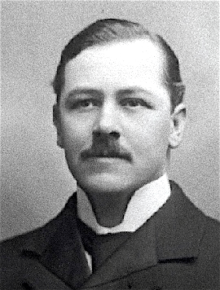
Arthur Marshall was born in Nottingham, England, on 23 December 1858. From 1873 to 1878 he was articled to Samuel Dutton Walker (1833?-1885) and subsequently practised as an architect in Nottingham. Between c.1891 and c.1899 he was in partnership with George Turner. His practice specialised in hospital and workhouse architecture.
He also worked as a silversmith and painter. A silver casket designed by him and executed by the Birmingham Guild of Handicraft Ltd. is illustrated in 'The Studio Yearbook of Decorative Art' 1909 (p.147). The casket, which was commissioned by Nottingham City Council, was used to hold the Freedom of the City of the City presented to Sir Samuel Johnson on the occasion of his becoming a Freeman of the City of Nottingham.
Marshall was elected an Associate of the Royal Institute of British Architects (ARIBA) in 1882 . He was also elected a member of the Nottingham Society of Architects in 1890 and was its President. Between 1889-1914 Marshall exhibited at the Royal Academy in London and at Nottingham Museum and Art Gallery.
Marshall lived at Southey Lodge, Forest Grove, Nottingham (1881), Couldon Place, Long Row, Nottingham (1882), King Street, Nottingham (1898, 1914), and Woodside, Chilwell, Nottinghamshire (1901). He died in Lockington, Leicestershire on 25 February 1915.
Directory of British Architects 1834-1914. Compiled by Antonia Brodie, et al. Volume 2: L-Z. London; New York: British Architectural Library, Royal Institute of British Architects/Continuum, 2001
Heathcote, P. F. 'Arthur Marshall'. Nottingham Civic Society Newsletter no. 66, 1985 pp. 11-15
Heathcote, P. F. 'Arthur Marshall, a Nottingham architect'. Architecture East Midlands no. 70, 1977 pp. 33, 35, 37
‘Obituary’. The Builder vol. 108, 5 March 1915 p. 221
‘Obituary’. RIBA Journal vol. 22, 1915 p. 216